Ragi upma is a variation of upma originating from Karnataka and made with finger millet flour. The natural earthiness of ragi, combined with a blend of vegetables and aromatic spices, results in a hearty and satisfying meal. Want more? Here is my collection of delicious Indian ragi recipes.

Why you will love this recipe?
- Wholesome and filling: Ragi upma is a wholesome and filling dish. This makes it an ideal choice for a hearty breakfast or a mid-day meal.
- Burst of flavors and textures: The combination of earthy ragi flavor, tanginess from tamarind, and crunchiness from peanuts create a delightful taste experience. This nachni upma has a soft and fluffy texture from the steamed ragi flour.
Ingredients
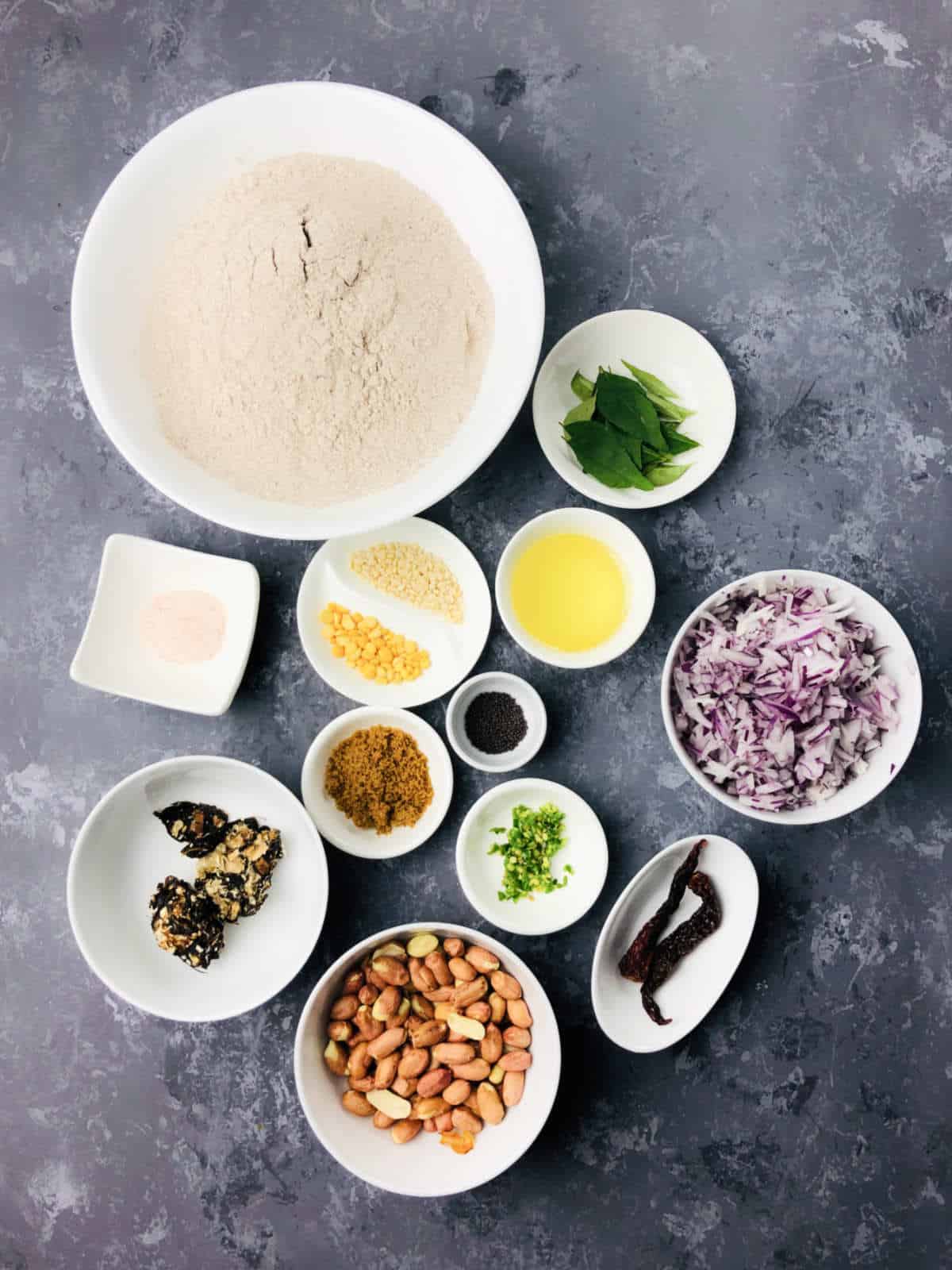
Ragi flour: This is the main ingredient of this dish.
Tamarind and jaggery: Tamarind is soaked in water and the juice is extracted. This, along with jaggery is mixed with ragi flour. These two ingredients not only make this dish flavorful, but they also help achieve that grainy rava-like texture for ragi flour.
Seasoning/tadka: Also called oggarane in Kannada, it is made using mustard seeds, dried red chili, curry leaves, chana dal, and urad dal.
See the recipe card for full information on ingredients and quantities.
Step-by-step instructions

Step 1: Take ragi flour in a large bowl. Slowly add the tamarind water in small batches and rub it into the flour (images 1 and 2).
Step 2: Add ½-1 cup more water gradually if needed. The texture must be grainy and damp (images 3 and 4).
Step 3: Place this ragi mixture in a steamer bowl and cover with a plate or foil. Steam for 10 minutes. Remove from the steam and fluff it up using a fork. Set aside (images 5 and 6).
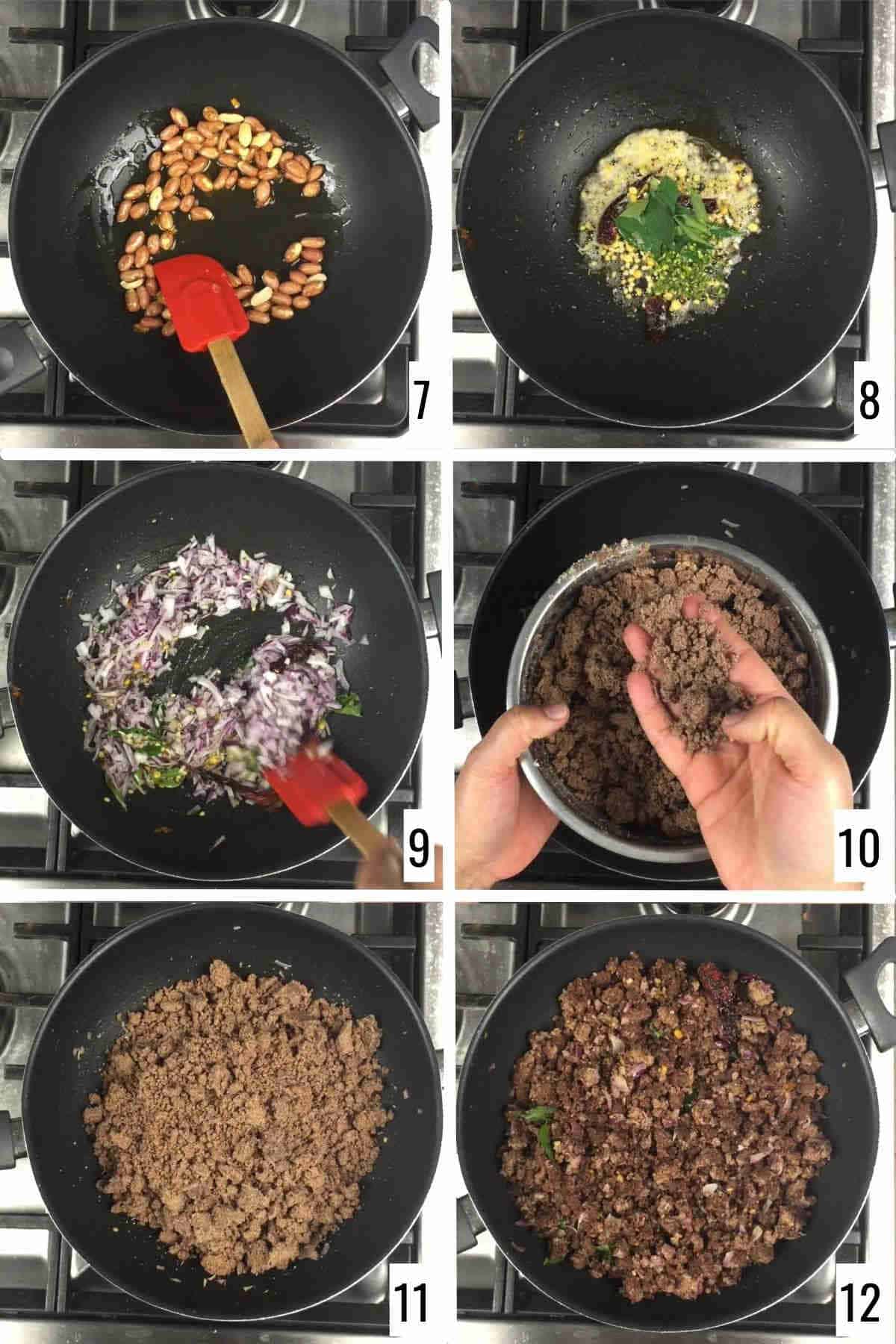
Step 3: Heat oil in a
Step 4: In the same pan, add mustard seeds and let them splutter. Add dried red chili, chana dal, urad dal, green chili, and curry leaves. Saute for a few seconds (image 8). Add onion and fry until it is translucent (image 9).
Step 5: Crumble the steamed ragi well to give it a rava-like texture (image 10).
Step 6: Add the crumbled ragi to the tempering mix well. Sprinkle a few drops of water and simmer until the ragi soaks up moisture (images 11 and 12).
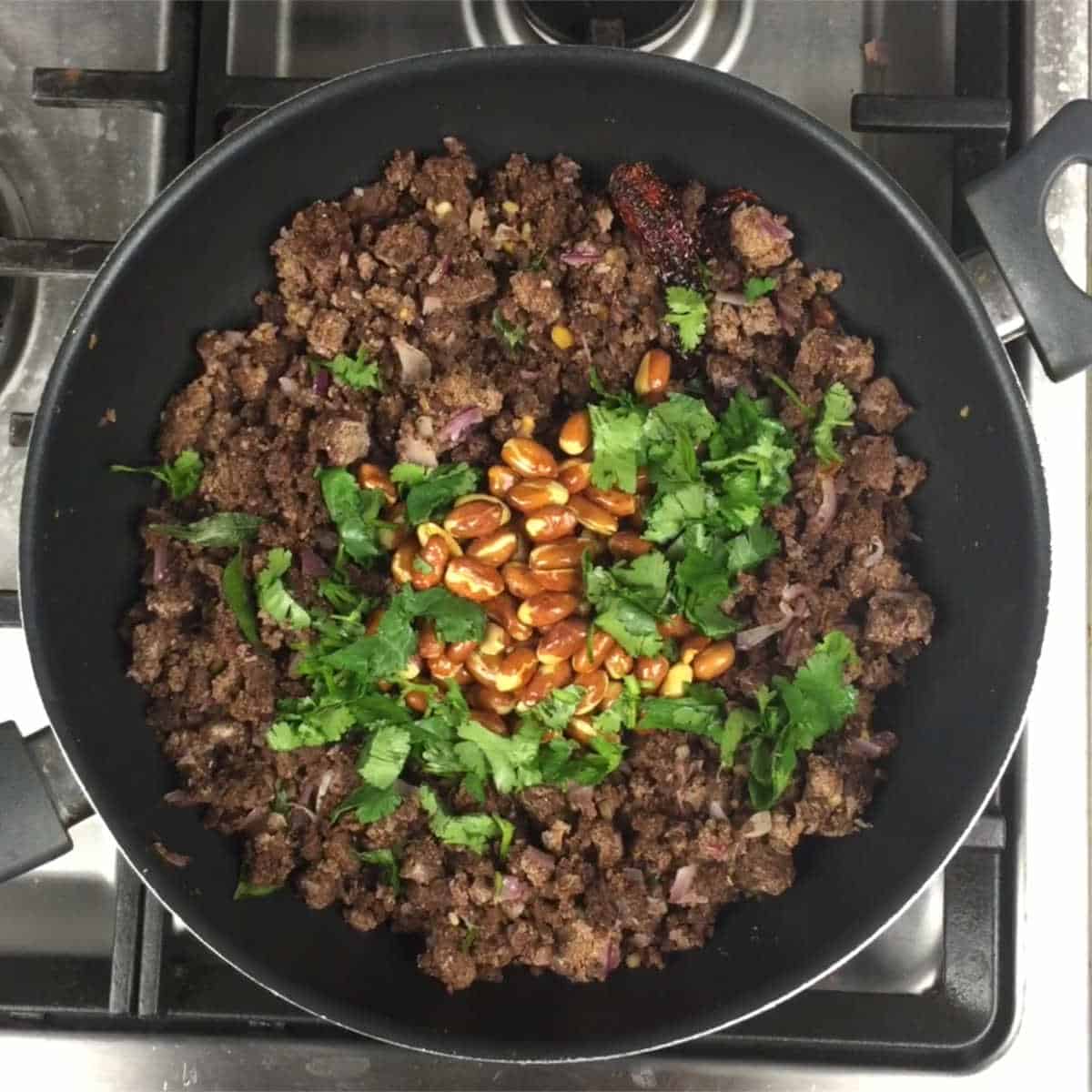
Step 7: Add fried peanuts and coriander leaves. Mix well and serve hot.
Expert Tips
Cover the ragi mixture before steaming. Else, the water from the steam will change its texture. After steaming the ragi, fluff it up using a fork while it is still hot. Crumble the ragi flour really well with tamarind water. This will help achieve the grainy texture for the ragi rava upma.
Add lots of onions. It gives great flavor and texture to the upma. Customize this nachni upma by adding vegetables according to your preference. Use a combination of vegetables like carrots, peas, bell peppers, or any other vegetables you enjoy.
Also, check out these recipes to make bread upma, rava upma, and vermicelli upma.
What to serve with ragi upma?
Coconut chutney: Coconut chutney is a classic South Indian condiment that pairs well with ragi upma. Its creamy and mildly spiced flavor complements the earthy taste of the upma.
Tomato Chutney: Tangy and slightly spicy tomato chutney can add a burst of flavor to your ragi upma. It enhances the overall taste and provides a refreshing element.
Yogurt: A side of plain yogurt or curd can provide a cooling and creamy element to balance the flavors of the ragi upma. It adds a touch of freshness to the meal.
Recipe FAQs
Upma, also known as uppittu or uppumavu, is a traditional South Indian breakfast dish. Upma incorporates a variety of seasonings and vegetables, resulting in a flavorful combination. Upma is made by dry roasting semolina and cooking it with spices and water. It has a thick, porridge-like consistency and slightly grainy texture.
Ragi flour, also known as finger millet flour, is a gluten-free flour made from the finely ground seeds of the ragi or finger millet plant. It is widely used in South Indian cuisine.
Ragi flour or finger millet flour is easily available in all Indian grocery stores. You can also find them at online stores like Amazon.
Yes, this dish is an excellent choice for gluten-free diets as ragi flour is naturally gluten-free. It serves as a nutritious alternative to traditional wheat-based upma.
Yes, you can customize this upma by adding various vegetables of your choice. Common additions include carrots, peas, bell peppers, and more. Chopped vegetables not only enhance the flavor but also provide additional nutrition to the dish.
To store ragi upma properly, allow it to cool to room temperature, transfer it to an airtight container, and store it in the refrigerator for up to 5 days. When ready to eat, reheat in the microwave or on the stovetop, adding a little water to moisten, and heat until warmed through.
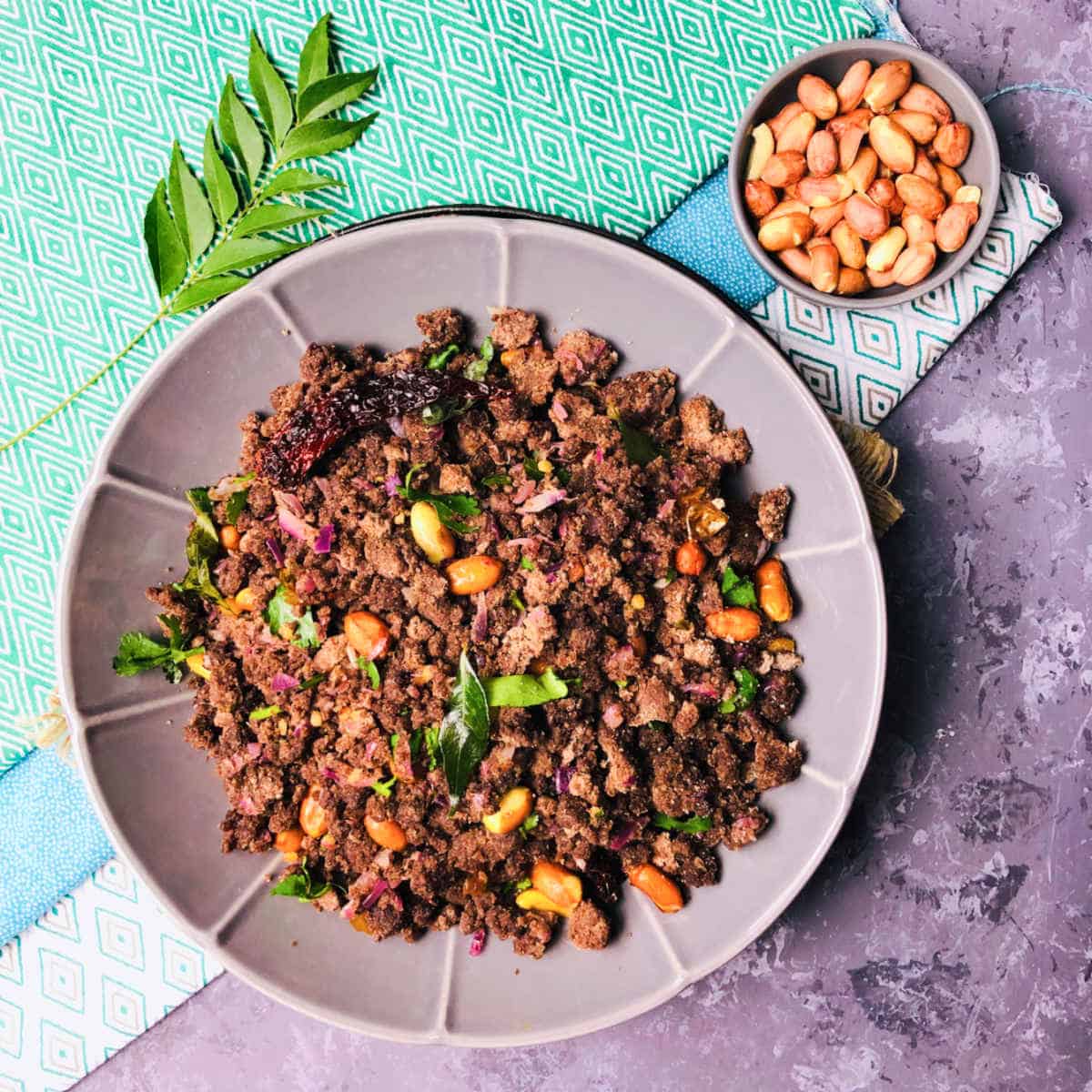
More recipes using ragi
If you tried this Authentic Ragi Upma Recipe or any other recipe on my website, please leave a ? star rating and let me know how it went in the ? comments below.
Recipe card

Ragi Upma
Ingredients
- 3 cups ragi flour
- ½ cup tamarind
- 1½-2 cups water
- 1 tablespoon jaggery
- 2 tablespoon oil
- ½ cup peanuts
- 1 teaspoon mustard seeds
- 1 teaspoon chana dal
- 1 teaspoon urad dal
- 2 dry red chili
- 1 sprig curry leaves
- 1-2 green chili or as per taste
- 1 large onion finely chopped
- 1 teaspoon salt adjust as per taste
- 2 tablespoon cilantro
Instructions
Steam the ragi flour:
- Soak tamarind in 1½ cups of warm water for 10 minutes. Extract the pulp and discard the remaining fibrous part.
- To the tamarind pulp, add salt and jaggery. Mix well.
- Take ragi flour in a large bowl. Slowly add the tamarind water in small batches and rub it into the flour.
- Add ½-1 cup more water gradually as needed. The texture must be grainy and damp.
- Place this ragi mixture in a steamer bowl and cover it with a plate or aluminum foil,
- Steam for 10 minutes. Remove from the steam and set aside.
Make ragi upma:
- Place a frying pan or kadhai on medium heat and add oil. Once it heats, add raw peanuts and fry until they are crunchy. Set them aside.
- In the same pan, add mustard seeds and let them splutter.
- Add dry red chili, chana dal, urad dal, green chili, and curry leaves. Saute for a few seconds.
- Add onion and fry until it is translucent.
- Add a little salt and give it a mix.
- Crumble the steamed ragi and add it. Mix the ragi well. Sprinkle a few drops of water and simmer until the ragi soaks up moisture. Around 8-10 minutes.
- Add fried peanuts and cilantro. Mix well and turn off the heat.
- Serve hot with accompaniments of your choice.
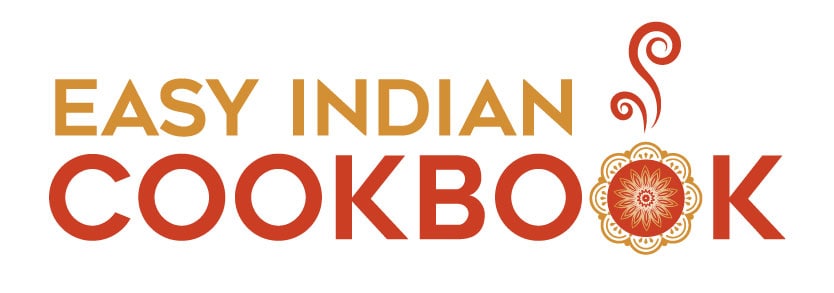
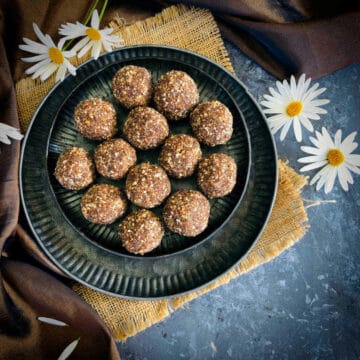


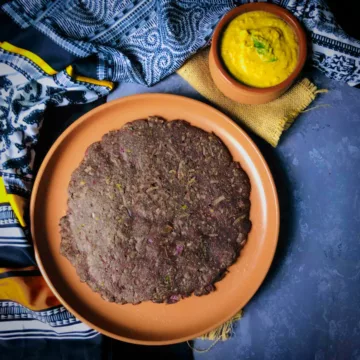
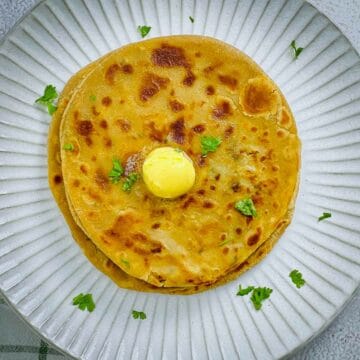
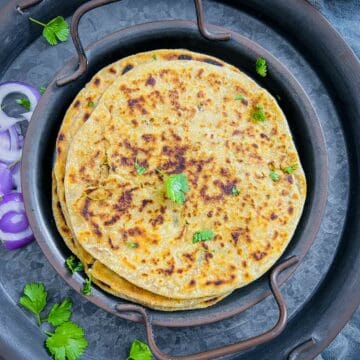

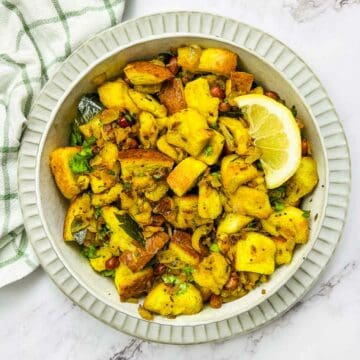
Comments
No Comments